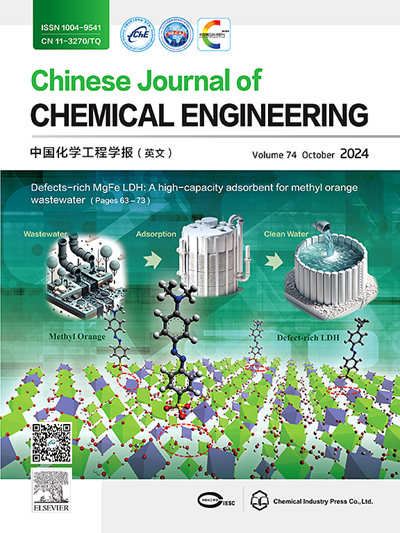两水相体系分离牛乳外泌体
IF 3.7
3区 工程技术
Q2 ENGINEERING, CHEMICAL
引用次数: 0
摘要
外泌体在疾病诊断和治疗干预方面具有重要的潜力。本研究的目的是探讨两水相系统(atps)分离牛乳外泌体的潜力。研究了牛奶外泌体的分割行为和牛奶分离,优化了atps和乳清的添加量。确定最佳分离条件为16%(质量)聚乙二醇4000、10%(质量)磷酸二钾、1%(质量)酶解乳清。在分离过程中,牛奶外泌体主要富集于间期,而蛋白质杂质主要存在于底期。该工艺得到的乳清外泌体纯度高(染色率90%,7.01 × 1010颗粒/ mg蛋白),均匀性高(多分散指数0.03),每ml乳清含有2.0 × 1011个颗粒。通过透射电镜、zeta电位和大小分布对分离的外泌体进行了表征和鉴定。结果表明,双水相萃取法可直接从乳清中富集和分离外泌体,为大规模分离外泌体提供了一种新的方法。本文章由计算机程序翻译,如有差异,请以英文原文为准。
Exosomes separation with aqueous two-phase systems from bovine milk
The exosomes hold significant potential in disease diagnosis and therapeutic interventions. The objective of this study was to investigate the potential of aqueous two-phase systems (ATPSs) for the separation of bovine milk exosomes. The milk exosome partition behaviors and bovine milk separation were investigated, and the ATPSs and bovine milk whey addition was optimized. The optimal separation conditions were identified as 16% (mass) polyethylene glycol 4000, 10% (mass) dipotassium phosphate, and 1% (mass) enzymatic hydrolysis bovine milk whey. During the separation process, bovine milk exosomes were predominantly enriched in the interphase, while protein impurities were primarily found in the bottom phase. The process yielded bovine milk exosomes of 2.0 × 1011 particles per ml whey with high purity (staining rate>90%, 7.01 × 1010 particles per mg protein) and high uniformity (polydispersity index <0.03). The isolated exosomes were characterized and identified by transmission electron microscopy, zeta potential and size distribution. The results demonstrated aqueous two-phase extraction possesses a robust capability for the enrichment and separation of exosomes directly from bovine milk whey, presenting a novel approach for the large-scale isolation of exosomes.
求助全文
通过发布文献求助,成功后即可免费获取论文全文。
去求助
来源期刊

Chinese Journal of Chemical Engineering
工程技术-工程:化工
CiteScore
6.60
自引率
5.30%
发文量
4309
审稿时长
31 days
期刊介绍:
The Chinese Journal of Chemical Engineering (Monthly, started in 1982) is the official journal of the Chemical Industry and Engineering Society of China and published by the Chemical Industry Press Co. Ltd. The aim of the journal is to develop the international exchange of scientific and technical information in the field of chemical engineering. It publishes original research papers that cover the major advancements and achievements in chemical engineering in China as well as some articles from overseas contributors.
The topics of journal include chemical engineering, chemical technology, biochemical engineering, energy and environmental engineering and other relevant fields. Papers are published on the basis of their relevance to theoretical research, practical application or potential uses in the industry as Research Papers, Communications, Reviews and Perspectives. Prominent domestic and overseas chemical experts and scholars have been invited to form an International Advisory Board and the Editorial Committee. It enjoys recognition among Chinese academia and industry as a reliable source of information of what is going on in chemical engineering research, both domestic and abroad.
 求助内容:
求助内容: 应助结果提醒方式:
应助结果提醒方式:


